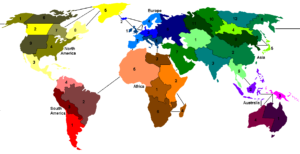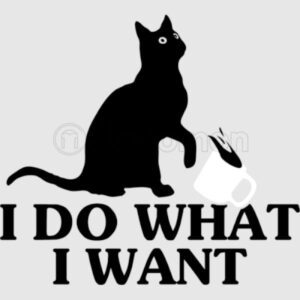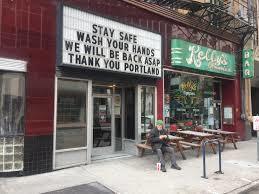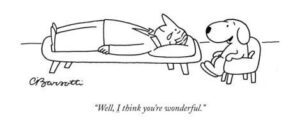Zackary Sholem Berger's Blog, page 2
November 16, 2020
Mask up … or what?
It’s not going to get to the people who need it very fast. So:
We need to help those struggling without food, shelter, employment, healthcare. We need to release people from unjust regulations, rent, incarceration.
To be honest I’m sick of telling people to mask up and socially distance. “Should” people do it? Sure, all things being equal. When was the last time things were equal? For anyone? I’m seeing construction workers. Think mask wearing is incentivized? I’m seeing homeless. Ditto.
Baltimore issued an order requiring (!) mask wearing outside (!). As a friend said, it’s (a) silly (b) unenforceable (c) an excuse to harass POC. So excuse me if I’m not out in the media lecturing people to #MaskUp. Yes, masks. Important. How about money?
September 29, 2020
BEHIND THE MASK, September 30: Can Love Cure the Pandemic?
Let’s not shoot ourselves in the foot at the very beginning. Love is a tall order; let’s ratchet it down a notch and set our expectations at “empathy.”Will empathy work to combat the pandemic? After all, the very definition of empathy is emotional understanding. Through empathy, perhaps we can understand the behavior of others, and to tailor the public health response to their experience?Unfortunately, emotional understanding doesn’t necessarily motivate concrete reactions on that basis. (I empathize with my child who is sad when the computer is taken away. It doesn’t change what I do.)
A kind of souped up empathy, unconditional positive regard (UPR) finds its origins in the humanist psychology of Carl Rogers. (I haven’t quite figured out all the pedigrees, but Rogers was a contemporary and colleague of Abraham Maslow [he of the hierarchy of needs], who studied with Adler, a collaborator of Freud’s.) It’s a cousin to the belief in self-actualization. UPR holds that – well, let Rogers tell it:
“… the individual has within him or her self vast resources for self-understanding, for altering her or his self-concept, attitudes, and self-directed behaviour–and that these resources can be tapped if only a definable climate of facilitative psychological attitudes can be provided.” [from the UPR entry on Wikipedia]
That is, anyone who helps another person (I learned this concept as a primary care doctor in training), if they provide an encouraging attitude, can help someone else change — *under their own steam.*
An amazing assumption, that each person can alter their attitudes if the way to that transformation is made easier. But wait a minute. Are we sure that each individual possesses those resources? Aren’t there so many people out there (we are sure of it!) who don’t care about the plague, hold cheap their fellow humans’ lives, don’t care, DON’T THINK?
Sure, those people exist. But if we believe in human beings (if we love humanity, one might even say), can we grant every individual those resources, that potential? There are reasons to adopt UPR (that love, its shocking egalitarianism). There are reasons to mock it (it assumes a stature of safety on the part of the facilitator; it assumes that these ‘resources’ are universal, or not contingent). But maybe as a working hypothesis, it’s not bad to go on. At least worth a try?
September 9, 2020
BEHIND THE MASK, September 9: You Are Not Stupid, This is Not Normal
BEHIND THE MASK, September 9: You Are Not Stupid, This is Not Normal
Ed Yong is a first class science writer; his pieces for the Atlantic on the virology and epidemiology of covid have become must-reads. But the acuteness of his observations regarding human behavior in the context of institutions, systems, and societies leaves something to be desired.
His recent Atlantic essay purports to catalog various sorts of cognitive biases and misbehaviors perpetrated by individuals and society. People behave badly, is his claim; individual failures sum to group failures.
Army ants will sometimes walk in circles until they die. The workers navigate by smelling the pheromone trails of workers in front of them, while laying down pheromones for others to follow. If these trails accidentally loop back on themselves, the ants are trapped . They become a thick, swirling vortex of bodies that resembles a hurricane as viewed from space. They march endlessly until they’re felled by exhaustion or dehydration. The ants can sense no picture bigger than what’s immediately ahead. They have no coordinating force to guide them to safety. They are imprisoned by a wall of their own instincts. This phenomenon is called the death spiral . I can think of no better metaphor for the United States of America’s response to the COVID-19 pandemic.
I am not a sociologist and do not pretend to be one. However, I am a primary care doctor, and through a bit of reading and observations of how patients are blamed in the midst of social and economic strictures conditioned by failed political systems, it’s evident that we search for individual predictors of behavior when the causes are much greater.
Yong talks about “magical thinking” but I have found very few people who engage in this sort of thinking, whatever that might be if ever well characterized. It reminds me of doctors who blame patients for “not understanding” just how bad hypertension can make things. Patients, and people in general, engage in decision making of a sort familiar to all of us. It is sometimes pragmatic, sometimes idealistic, but always linked in some fashion to their own preferences.
People weigh decisions. People have a sense of risks and benefits. People often lack knowledge, but the addition of a tincture of knowledge, titrated in by outside parties, do not realign people’s preferences as much as we might think or hope. We fail to recognize the larger systems that constrain people’s decision making.
Both Yong, and — a strange bedfellow — Ross Douthat managed to find their way to an observation which I think very relevant.
In his recent essay’s final paragraph, Yong wonders whether covid will become “the new normal.”
Somewhere in his Twitter thread of today, in which Douthat ventures that the covid response of the US is actually average if one “steps back from deaths,” he mentioned in passing that we have never been good at large government interventions anyway.
The two observations align. As individuals, we can strive for our desires, we can do what we are able to do.
But normality is a cultural and political judgment, imagining individuals as nothing more than Turing machines with an added error function. There is so much relegated to the normal, the is taken as an ought, that might be differently envisioned if individual choice and flourishing are enabled.
We can try and achieve solidarity. We can organize towards fulfilling and refining a more democratic polity.
When I had small kids, I loved Dr. Spock’s plain spoken adage: “You know more than you think you do.” We all make mistakes, but cognition is not what we should be judged by. We have preferences we can act on if allowed to do so, if not prejudged as stupid and if our societal inequities are not dismissed as normal.
September 3, 2020
BEHIND THE MASK, September 3
Playing Risk
It’s an earnest game, judg ing what risks are serious, which trivial, and how to balance them through daily life. Over the past decade or two I have changed how I understand risk (and how I discuss it with my patients). Covid makes a correct approach to risk all the more fraught. Correct, however, is not to be determined by a set of axes, but a breadth of view. Follow along.
ing what risks are serious, which trivial, and how to balance them through daily life. Over the past decade or two I have changed how I understand risk (and how I discuss it with my patients). Covid makes a correct approach to risk all the more fraught. Correct, however, is not to be determined by a set of axes, but a breadth of view. Follow along.
For a long time I was absorbed by the topic of risk communication. What is your risk of developing a certain sort of cancer during your liffetime? There is the deadly dull (and inaccurate) monologue of the doctor to patient, presenting one number as if it’s the Torah from Mount Sinai (you have six months to live — goes the joke, and even today, the horrible experience of some people in their provider’s office). More accurate is a spectrum of risk, an estimate which encompasses a range of probabilities. Getting people to understand that is not easy — I mean doctors and patients, because difficulty with understanding numeric information is common among both. There are a wealth of strategies, people doing good work in this area.
Neighboring the topic of risk communication comes a consideration of how people process risks, cognitively and emotionally. Yes, presentation matters, but certain risks loom larger than others; errors of omission can be more significant in our eyes than those of commision. Even if you are presented a spectrum of risks in a way which you should understand, your brain might consider them differently than how the presenter intends. “Cognitive bias” is the watchword of behavioral psychologists, and economists, who believe that nudges — incentives — are necessary to guide us towards a less errant view of our own self interests.
There is so much wrong with this approach, to be honest — and I’ve only come to realize it after a decade of patient care in nested systems which deny patient individuality even as they grindingly reproduce systemic oppression. The idea of “homo economicus” — that perfect rational being who processes risks and benefits, responding just according to the correct market signals — is not just depressing, and indefensible in the ideal, but doesn’t conform to empirical reality either. (Even economists recognize this.) Further, people are different. Understanding how each indivdual undergoes life in a different way is part and parcel of understanding that individual-level risk is also insufficient: we need to understand how systems, cultures, and regimes of control modify the distribution of risk across groups.
I have come to this realization through my disabled patients, and learning from disabled activists (mostly on Twitter). Imagining risks as additive or multiplicative compared to a “normal” baseline ignores that the baseline is malleable, heterogeneous, outside of individual control, and bent by gravitational fields of economic and social priorities.
The social theory of disability (which comes in many flavors) proposes that society needs to be set up for the benefit of people, not the other way around. Similarly, with regard to Covid (and chronic covid), physicians, and all who care for others, need to alter the pattern in which we demand from the chronically ill that they somehow up-titrate their resilience, toggle to less pain, and generally MANAGE BETTER, by decreaisng their risk. “Wear masks, wash your hands, stay inside,” unless you can’t, or you don’t have the water, or you have to work.
How can we alter these patterns? I don’t have a fully worked-out theory, but I imagine someone has plumbed the depths of the soil to find where the roots of ableism and of capitalism derive from a single trunk of productivity. Making more for the sake of more underlies many expectations that undermine the chronically ill and those with less. Thinking that those “over there” are somehow more abnormal (or more normal) than we are limits the possibilities of solidarity.
The solution is not to divorce ourselves from the realms of political and social affairs, adopting a moralist quietism that all will be well if we think positive, but to provide sufficient support for all, realizing that individual risk-balancings differ because of how our landscape has been structured over time.
Chronic covid will cause much chronic disability, and society needs to fit that. We need to realize that before we again adopt a patient-blaming and symptom-minimizing approach.
August 25, 2020
BEHIND THE MASK, August 25: School Days
Reopening is on everyone’s minds, and the outlines of the conflict are at this point clear to many: not just safety for kids, parents, teachers, and staff, but also for surrounding communities. Decisions may reinforce inequity.
Specific statistical models are available for estimating the risk that a gathering of N people includes at least one person with covid; other models estimate the influence of airflow and other aspects of building design.
The above depend on local factors: who is likely to be infected, and how many; how much contact (or what “mixing,” as epidemiologists call it) is prevalent in a community; what the local schools are like.
But so much isn’t known. We lack consistent regimes of testing, tracing, and isolation. Only 14 states make their tracing data public; So many cases (such a basic number!) are not found or included. And those who aren’t included are likely to be in the out-of-the-way corners that are too easy to ignore (underpasses, prisons, streets; entire neighborhoods).
Living under uncertainty is its own psychological trauma, but having — at the same time — to include in all our calculations considerations of who might be forgotten is a tougher job still, whether we are calculating statistics or merely jotting up risks and benefits on our pads or in our heads. 
Yet the forgotten are always closer than one thinks.
August 14, 2020
August 6, 2020
BEHIND THE MASK, AUG. 6 “DO WHAT I WANT AND NO ONE GETS HURT”
What is the best way to get other people to do what we want? So often during the pandemic this question is directed at other people who are not engaging in the behaviors we find praiseworthy–either right now, or what we want them to do in the future. 
But telling others what to do is not as simple as it seems. Not only do directive statements (“do this”) fail often to yield the result we wish, whether in daily life or in healthcare, but the behavior we find praiseworthy is not actually the sole solution we might think it is. Rather, human behavior is in the context of structures. Each individual behavior might be praiseworthy for spiritual, ethical, philosophical, or esthetic reasons, but historical changes are brought about by collective action. Even individual action by itself has different repercussions (and necessary preconditions) depending on the individual.
The first behavior that people have centered is mask-wearing. A recent post in Health Affairs envisions a national mask mandate for businesses: https://www.healthaffairs.org/do/10.1377/hblog20200804.515241/full. Quite apart from the legal aspects of a mandate, it attempts to pluck an individual behavior out of the context in society which makes an individual — an individual, with their own identity and complex collection of risks and benefits which impacts how they (decide whether to) interact with others. In a word, mandating mask-wearing by “everybody” elides the differences between people. Who is likely to be punished by their employer, the police, their landlord, or their school for not wearing a mask, and who is likely to be at the mercy of a non-mask-wearer even if a legal mandate supposedly protects them? Yes, wear masks. But “wear a mask” only “works” when in the context of the individual’s life, relationships, and stressors.
The second is vaccines. We already see devout wishes (hopes and dreams) that vaccines will protect everyone. Whoever says “protect everyone” likely thinks about it a moment, then realizes no vaccine protects “everyone.” No vaccine *gets* to everyone. And no vaccine is welcomed by everyone. This article discusses vaccine hesitancy: https://www.npr.org/sections/coronavirus-live-updates/2020/08/01/897939117/public-health-expert-calls-to-repair-distrust-in-a-covid-19-vaccine. To my mind it focuses too much on information and education. Just tell Sally what to do, she’ll do it! But who are you, that Sally should listen to you? And what if your hospital (say) charged Sally’s sister $25,000 for a botched operation?
Science is not some god on a throne, but a societal force that for more than a century has penetrated into the rhythms of daily life. This article in Foreign Policy explains how the sociologist Ulrich Beck explained how everyone is an consumer and interpreter of risk. https://foreignpolicy.com/2020/08/01/the-sociologist-who-could-save-us-from-coronavirus/ The fragmentation of authority means that each person judges for themselves whether a vaccine is worthwhile. Enlisting these individuals is thus all the more complicated.
July 29, 2020
Every one at night: a poem for the Ninth of Av
הָעִיר יָשְׁבָה בָּדָד
הֵעֵם יוֹשֵׁב בַּבִּדּוּד
הוֹן שׁוֹדֵד וָלֹא שֶׁדָּוִד
עֲלֵה נְגִיף בְּחַלּוֹן וּמַדָּד
רִחוּק חֶבְרָתִי שֶׁל כֹּל אֶחָד
[The city dwells alone
The people stay-at-home
Fortunes thieve, are not stolen
The virus rises at the windows, measures
Everyone’s distance]
Refrain: kol echad balailah
בָּכָה תִּבְכֶּה בַּלַּיְלָה
סִרֶנוֹת מְמַלְּאוֹת אֶת הַלַּיִל
עִם מַסָּעוֹת מְטופָּלִים וְחוֹזְרִים חֲלִילָה
בֵּינְתַיִם הַפּלֵיטִים בַּסֶּגֶר הַתַּיִל
רַק הַהִתְנַגְּדוּת עוֹשָׂה חַיִל
[Weep at night
Sirens fill the evening
Bearing patients and back again
Refugees isolated in barbed wire
Only resistance is powerful]
Refrain: kol echad balailah
װער זיצט און װײנט אױף דער נאַכט
צו פֿיל קרבנות צו דערמאָנען
דו פֿעלסט אונדז איצט, אל חנון
דער שׂורר רעדט און לאַכט
בשעת קײן האָפֿענונג איז פֿאַראַנען
[Who sits and weeps at night
Too many victims to remember
You’re missing, Merciful One
The foes laugh and chat
While hope is lacking]
Refrain: kol echad balailah
איך בין דער מענטש װאָס האָט דאָס אַלץ געזען
און האָט נאָך נישט אָנגעזען דעם סוף
אַ גאַנצע נאַכט בלײַב איך אױף
איך לײען, און לײען איבער, און קוק און זע
װי אַלץ װערט אָפּגעגעקערט װי מיט אַ בעזעם
[I am the person who saw everything
And not yet seen the end
I stay up all night
Read, read over, look and see
Everything swept away]
Refrain: kol echad balailah
We and the city are alone
Wealth robs what people have
Whiteness cuts in half
We’re distanced from what we’ve known
What is it worth to own
Refrain: kol echad balailah
Every night’s for crying
Empty but for the sirens
EMTs still driving
Refugees trapped in silence
Renew our days in defiance
Refrain: kol echad balailah
BEHIND THE MASK, July 28

One article considers this explicitly, even if it addresses Covid only glancingly. It’s about the various holders of political power in Portland, Oregon, and how the interaction of those power centers has changed — with Covid, and with protests. (https://hardcrackers.com/portland-report/) The observation that hit me with most force was this: how does one pursue change under material limitations? In other words: people tend to focus on what’s scarcest for them, so how can it seem natural to redraw boundaries to include others? (Think about the school meetings you might be part of, for instance.)
The other doesn’t mention change in political structures at all – it’s a piece from a few weeks ago, asking whether Chasidic Jews have achieved herd immunity. That question itself, however, seems secondary (it’s difficult to answer precisely, and it’s likely not the case). Most interesting is how Chasidim (or anyone) make decisions; who they find trustworthy; what institutions they have recourse to. Check out the mention of networks of physicians that some Chasidim of certain types found useful. (Would love a history of how these emerged.) https://www.jta.org/2020/07/08/health/brooklyns-hasidic-jews-are-acting-like-they-have-herd-immunity-could-they-be-right
July 21, 2020
BEHIND THE MASK, July 21
 1. Solidarity. Solidarity?
1. Solidarity. Solidarity?Consider this quote: “Most people’s economic situations would determine whether they stayed home from work. voluntarily. If their workplace was open and they needed the money to pay their bills, people would drag themselves to work. … The only sure ways to prevent this state of affairs would be to force workplaces to close or to pay workers to stay home.”
This is taken from Rosemarie Tong’s 2008 memoir about serving on an influenza task force convened by the North Carolina Department of Public Health. It’s quoted by two public health legal scholars in an article (https://democracyjournal.org/magazine/how-the-law-harms-public-health/) about the current legal regimes around employer protection – how they are insufficient to encourage a socially attuned approach (rather than a behavioral/blaming approach) to pandemic control, and how they must change to emphasize solidarity. Like many legal articles, it’s heavily empirical rather than theoretical. The alternatives it presents are promising, but don’t fully develop what “solidarity” means when considering the adversarial employer/employee relationship.
How do we consider workers as part of society, and how can we acknowledge every worker’s daily needs? Who are we in solidarity with – and who not? Can we decline to be in solidarity with those who might hate us or wish us ill?
Suggested action: Consider what it would take to achieve solidarity with a group with whom you don’t usually interact. It will involve asking them what their priorities are. (Note to self!)
2. The Kingdom of the Bereaved
An article in the Proceedings of the National Academy of Sciences (https://www.pnas.org/content/early/2020/07/09/2007476117#T1) estimates what the authors call a “Covid bereavement multiplier”: how many kin members are bereaved by the death of one family member to Covid. (The estimate, based on demographic simulations, is around 9.) I don’t know what number I expected. 9 plus the person lost to Covid is ten, which (in my tradition) is a prayer quorum. So when we consider death statistics, we are actually shadowed at the same time by the penumbra of those numbers. I can’t give a suggested action except that we mourn properly, perhaps as a national, weekly observance. Consider also those who our government is murdering through negligence, whose 9 bereaved are across a border or a sea. (https://www.motherjones.com/politics/2020/07/whistleblowers-say-ice-detention-center-used-deceptive-tricks-to-conceal-covid-outbreak/)
3. Living Situations
From the Annals of Internal Medicine: “More than 1 in 5 U.S. homes, housing about one quarter of all Americans, lack sufficient space and plumbing facilities to comply with recommendations to isolate or quarantine to limit household spread of COVID-19. This proportion is particularly high among homes occupied by minority and poor individuals and among apartments, a pattern that mirrors both the high incidence of COVID-19 in those groups and racial discrimination in access to housing that was federal policy until the 1960s and persists today.”
(https://www.acpjournals.org/doi/10.7326/M20-4331) Suggested action: Will people get evicted because of job loss in your community? Learn and act
4. School and solidarity
People are hiring tutors for their kids to supplement, replace, or provide alternatives to on-line education. Considering the above discussions of solidarity, who does this leave out?





